The Scoop: Can Dogs Eat Vanilla Wafers?
If you’re a pet owner, you know how tempting it is to share food with your furry friend. It can be hard to resist those pleading eyes and wagging tail, but it’s important to remember that not all human foods are safe for dogs to eat. In this article, we’ll explore whether or not dogs can eat vanilla wafers and what you should know before offering this sweet treat to your pooch.
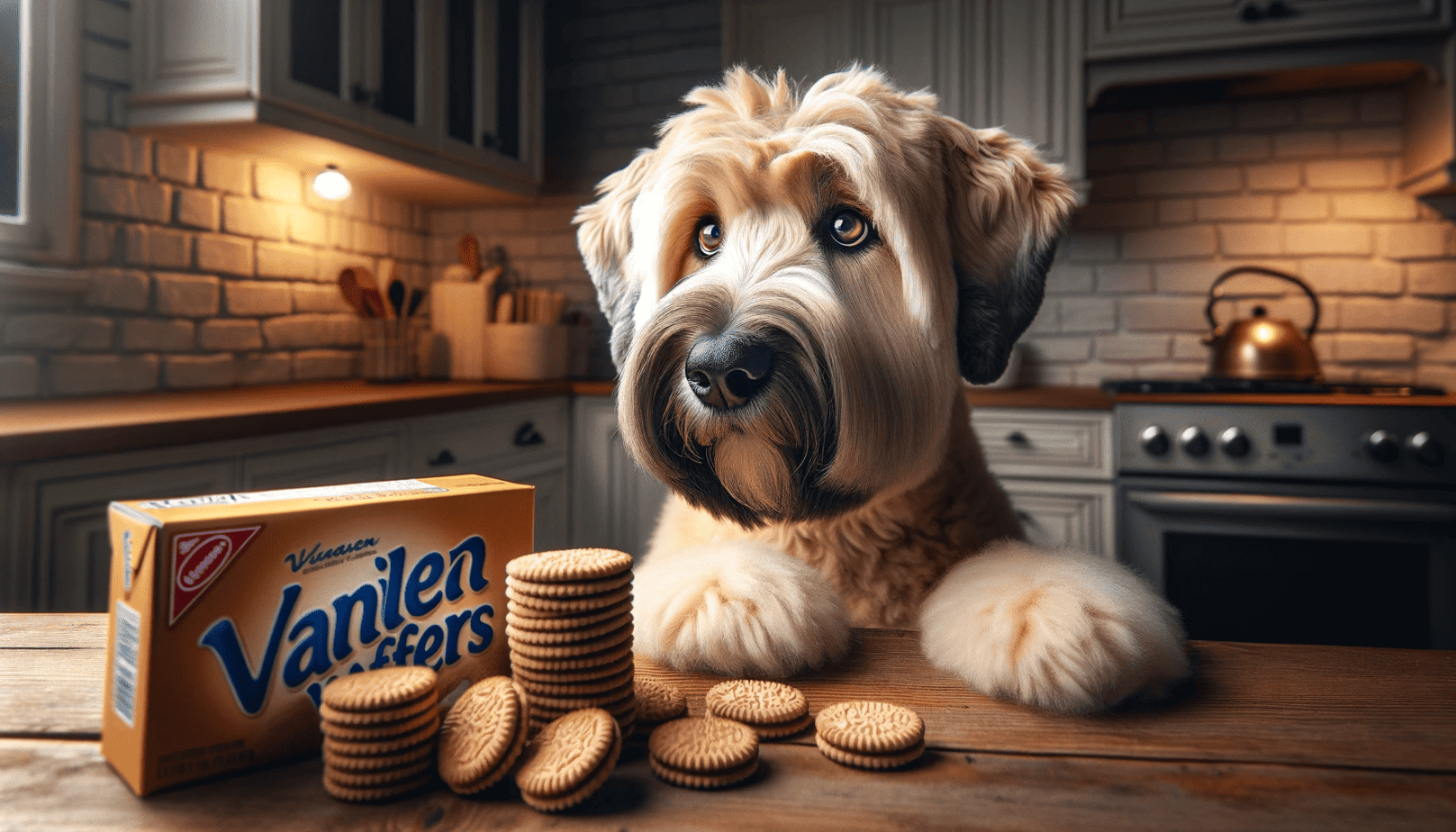
It’s All About Safety
As a responsible pet owner, it’s crucial to understand the potential dangers of feeding your dog certain human foods. Some foods are perfectly safe for dogs to consume. Others can be toxic and even life-threatening if ingested in large quantities. That’s why it’s important to carefully research any new treats or snacks before giving them to your furry friend.
Vanilla wafers may seem harmless enough, but they are not specifically designed for canine consumption. That means there could be potential health risks associated with feeding them to your dog.

The Ingredients in Vanilla Wafers
Before we dive into whether or not dogs can eat vanilla wafers, let’s take a closer look at what these tasty treats are made of. Most vanilla wafers contain flour, sugar, vegetable oil, eggs, and artificial flavors. While these ingredients may be fine for humans in moderation, they can cause issues for our four-legged friends.
The first ingredient listed on most vanilla wafer packages is flour. This means that these cookies are primarily made up of carbohydrates – which isn’t necessarily a bad thing. However, it does mean that they don’t offer much nutritional value beyond energy.
Sugar is another key ingredient in vanilla wafers and one that can be problematic for dogs. Too much sugar can lead to weight gain, dental issues, and even diabetes over time.
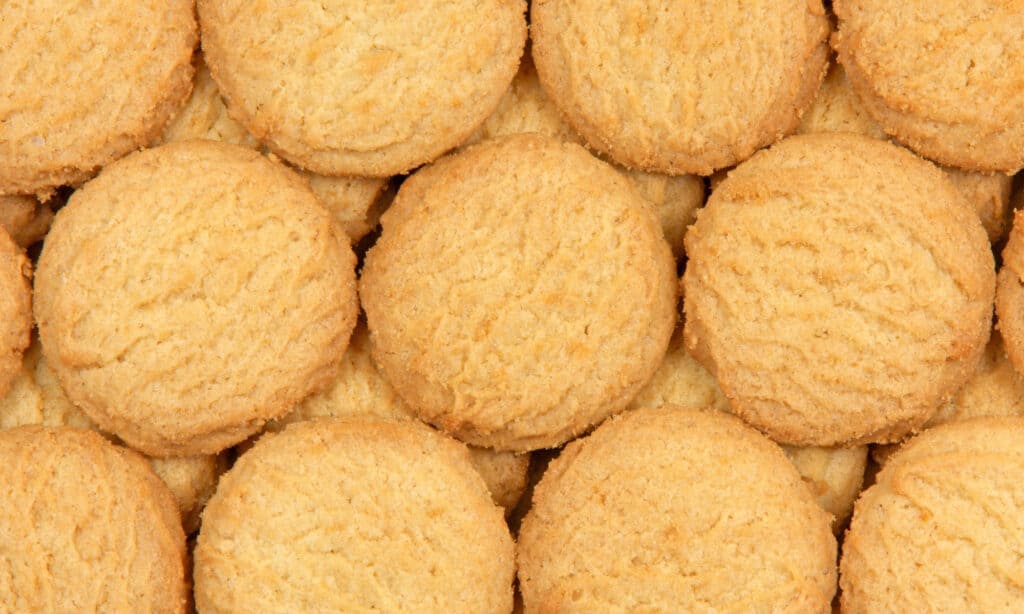
Can Dogs Eat Vanilla Wafers?
Now that we know what’s in vanilla wafers, the big question is whether or not they are safe for dogs to eat. The short answer is that yes, dogs can technically eat vanilla wafers without it being immediately dangerous to their health. However, this doesn’t mean that they should.
As we mentioned earlier, vanilla wafers contain a lot of sugar and carbohydrates with minimal nutritional value. This means that they aren’t an ideal treat for dogs who need a balanced diet to stay healthy.
The Risks of Feeding Your Dog Vanilla Wafers
If you decide to give your dog a vanilla wafer as an occasional treat or reward, there are a few things you should keep in mind:
- Digestive issues: dogs who consume too many carbohydrates or sugars may experience digestive issues like diarrhea or stomach upset.
- Tooth decay: Sugar is one of the leading causes of tooth decay in both humans and animals. If you regularly feed your dog sugary treats like vanilla wafers, it could lead to dental problems down the line.
- Weight gain: As we mentioned earlier, too much sugar can lead to weight gain over time. If your dog isn’t getting enough exercise or eating a balanced diet, feeding them sugary snacks like vanilla wafers could contribute to obesity.

A Better Alternative: Fruits and Vegetables
If you’re looking for a healthier snack option for your dog, consider offering them fruits or vegetables instead of vanilla wafers. Many fruits and vegetables are safe for dogs to eat and can provide a range of nutritional benefits.
Some top choices include:
- Apples (without seeds)
- Bananas
- Carrots
- Cucumbers
- Sweet potatoes
Whenever you’re introducing a new food to your dog’s diet, be sure to start with small amounts and monitor their reaction closely. If your dog shows signs of an upset stomach or an allergic reaction, stop serving that particular food immediately.
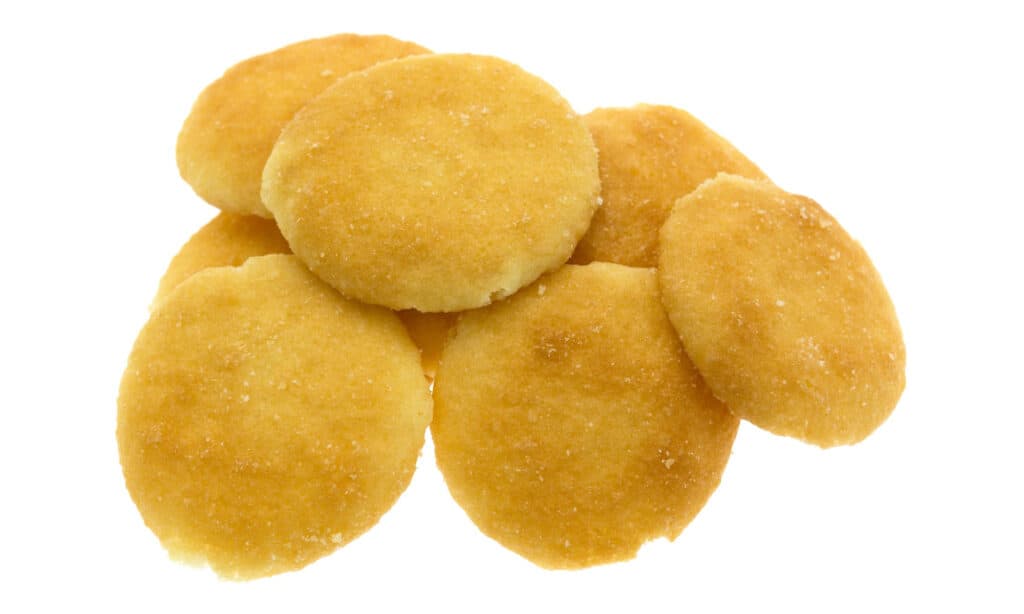
The Bottom Line: Should You Feed Your Dog Vanilla Wafers?
In general, it’s best to avoid feeding your dog vanilla wafers on a regular basis. While they may not be immediately harmful in small quantities, they don’t offer much nutritional value and can contribute to health issues over time.
If you do decide to give your furry friend the occasional vanilla wafer as a treat or reward, be sure to monitor their intake closely and look out for any signs of digestive upset or other health problems. And remember – when in doubt, always consult with your veterinarian before giving your dog any new food.
What are Vanilla Wafers?
Vanilla wafers are a type of cookie that is popular in many households. They are thin, crispy biscuits that are flavored with vanilla extract. The texture of vanilla wafers is usually similar to that of a graham cracker, but they are smaller and thinner.
These cookies have a mild, sweet flavor that makes them enjoyable for humans. Vanilla wafers are commonly used in baking and dessert recipes.
They can be crushed up and used as a base for cheesecakes or pies, or they can be layered with pudding or whipped cream to create a quick dessert. In addition to being used as an ingredient, vanilla wafers can also be consumed on their own as a snack.
The main ingredients in vanilla wafers include flour, sugar, eggs, butter or vegetable oil, and vanilla extract. Some recipes may include other additives such as baking powder or salt to enhance the flavor and texture of the cookies.
Vanilla wafers usually have a light brown color and may be sprinkled with sugar on top before baking. Vanilla wafers are typically baked at high temperatures for short periods of time in order to achieve their crispy texture.
They should not be over-baked as this can cause them to become dry and hard. In recent years, there has been an increase in the popularity of using natural ingredients when making cookies like these so you might find healthier alternatives such as oat flour instead of regular flour or coconut sugar instead of white sugar which could make it easier for dogs if you decide eventually that giving them some is ok (but we’ll get more into that later).
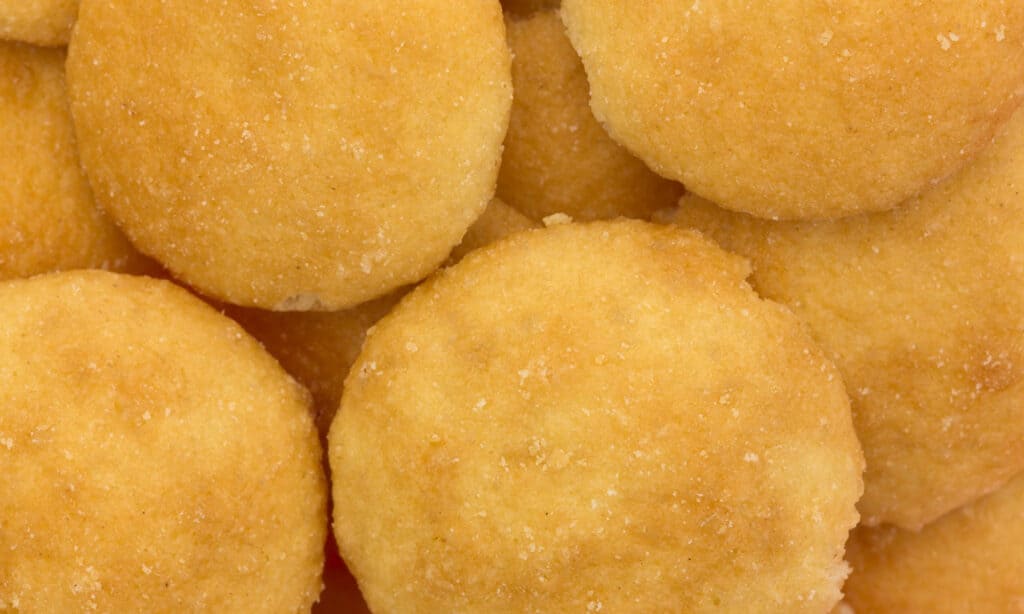
Can dogs eat vanilla wafers?
If you’re someone who loves to snack on vanilla wafers, you might wonder if your furry friend can also indulge in this sweet treat. However, just because something is safe for humans to eat doesn’t necessarily mean it’s safe for dogs.
So, can dogs eat vanilla wafers? The short answer is yes, but there are some things you need to keep in mind.
Potential health risks of feeding your dog vanilla wafers
One of the biggest concerns with feeding your dog vanilla wafers is the high sugar content. Dogs have a much lower tolerance for sugar than humans do and consuming too much sugar can lead to a number of health problems such as obesity, dental problems and even diabetes. Another concern with feeding your dog vanilla wafers is the potential digestive issues that may arise.
Many commercial brands contain additives such as artificial colors or flavors that could upset their stomach or even cause diarrhea. Eating too many vanilla wafers may also lead to weight gain which can lead to more serious health concerns down the line such as joint pain and heart disease.
Moderation is key
While it’s generally okay for dogs to have an occasional bite of a plain vanilla wafer, it’s important not to overdo it. You should never feed your dog more than one or two small pieces at most and always make sure they have access to plenty of fresh water afterwards. If you’re concerned about the sugar and unhealthy ingredients in commercial vanilla wafers, you can always make your own homemade version using healthy ingredients such as whole wheat flour, eggs and natural sweeteners like honey or applesauce.
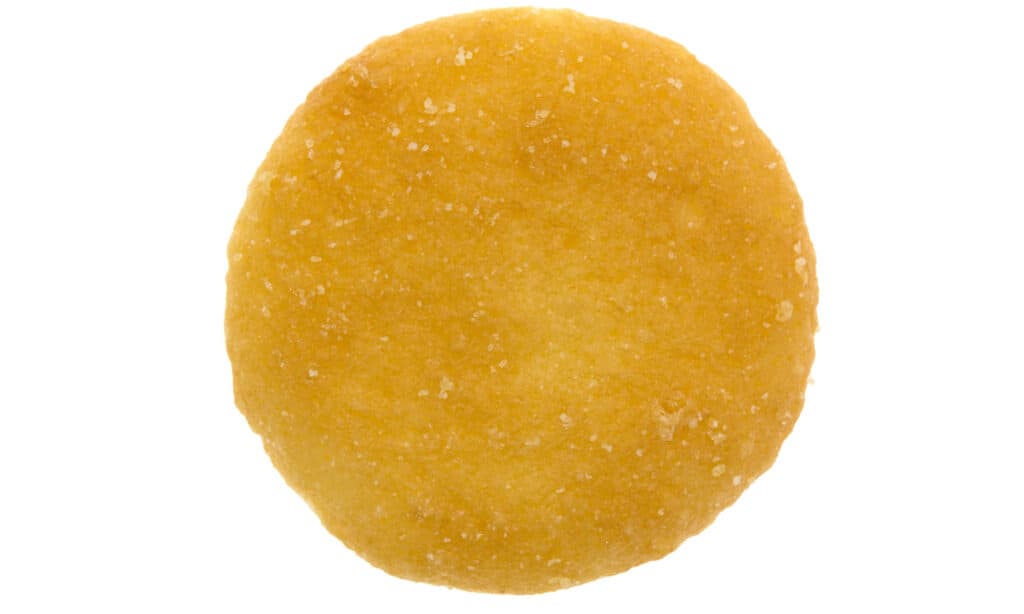
The Pros and Cons of Giving Your Dog Vanilla Wafers
Benefits of Feeding Your Dog Vanilla Wafers
Vanilla wafers are a sweet, crunchy treat that many dogs enjoy. They can also provide some nutritional benefits.
For example, vanilla wafers contain carbohydrates which can provide energy for your dog. Additionally, giving your dog a vanilla wafer as a training treat can be an effective way to reinforce good behavior.
One of the main benefits of giving your dog vanilla wafers is that they are easy to find and relatively inexpensive. You can purchase these treats at almost any grocery store or pet supply store.
Drawbacks of Feeding Your Dog Vanilla Wafers
Despite the potential benefits, there are also several drawbacks to feeding your dog vanilla wafers. The high sugar content in these treats means they should only be given to your dog in moderation. Consuming too many sugary foods can lead to weight gain, diabetes, and other health problems.
Another potential issue with giving your dog vanilla wafers is digestive problems. Dogs have different digestive systems than humans, so they may not be able to tolerate certain ingredients in human foods like vanilla wafers.
If you do decide to give your dog a vanilla wafer as a snack or training treat, it’s important to monitor their reaction closely for any signs of discomfort or distress. If you notice any issues with digestion or behavior changes after feeding them this treat, it’s best to avoid giving it again in the future.
Alternatives to Feeding Your Dog Vanilla Wafers
Fruits as a Treat for Your Dog
Fruits are an excellent option for dogs as they provide natural sugar that is beneficial to their health. They are a great source of vitamins and minerals that can help keep your dog healthy and happy. Some of the best fruits to feed your dog include bananas, apples, blueberries, strawberries, and watermelon.
Bananas are a great option for dogs as they are high in potassium and fiber. They also have natural anti-inflammatory properties that can help reduce inflammation in your dog’s joints.
Apples are another great option as they contain antioxidants that can help boost your dog’s immune system. Blueberries are also excellent for dogs as they contain antioxidants that can help prevent cancer and other diseases.
Strawberries are a good source of vitamin C which can help boost your dog’s immune system. Watermelon is a refreshing treat for dogs during the summer months as it contains a lot of water which keeps them hydrated.

Vegetables as a Treat for Your Dog
Vegetables are another great option for treats for your furry friend. They have low calories and offer many nutritional benefits without the added sugar found in many commercial dog treats.
Some of the best vegetables to feed your dog include carrots, green beans, sweet potatoes, pumpkin, and spinach. Carrots make an excellent snack due to their crunchy texture which helps keep their teeth clean by scraping away plaque buildup on teeth surfaces.
Green beans offer a tasty treat with high levels of iron which helps promote strong bones in dogs. Sweet potatoes make an excellent substitute because they offer dietary fiber which promotes good digestive health.
Pumpkin is packed with nutrients such as vitamins A, E & C along with potassium & iron making it one of the most nutritious foods you could give to pups! Spinach provides anti-inflammatory properties and antioxidants that can help ward off cancer and other diseases.

Healthy Store-Bought Treats
If you prefer to buy your dog’s treats rather than making them yourself, there are many healthy options available in the market. Look for treats that are low in calories, made from natural ingredients, and free from any harmful additives.
Brands such as Zuke’s Mini Naturals or Blue Buffalo Wilderness Trail Treats offer a variety of flavors that dogs love without compromising their health. These treats have limited ingredients, and they are great for training sessions or as rewards for good behavior.
Cook Your Own Dog Treats
Cooking your own dog treats is a fun and creative way to ensure that your furry friend gets the very best. You can customize the ingredients to suit your dog’s taste preferences, dietary needs, and allergies. Some yummy homemade treat recipes include peanut butter banana bites or sweet potato chews.
Peanut butter banana bites require only two ingredients – peanut butter and ripe bananas – which makes it easy to make at home. Sweet potato chews involve slicing up sweet potatoes into thin strips before baking them slowly in the oven until crispy.
There are many alternatives to vanilla wafers when it comes to treating your furry best friend right! Fruits, vegetables, healthy store-bought treats or cooking your own dog treats are all excellent options that will provide nutritional benefits without sacrificing taste!
As always when trying new food items with your pet start off small quantities at first then gradually increase once you know how well they tolerate them! Remember no matter which option you choose always be mindful of portion sizes especially if weight management is a concern!

Conclusion
Whether or not dogs can eat vanilla wafers is a question that requires careful consideration. While it may seem harmless to give your furry friend a treat from time to time, certain human foods can pose a real danger to their health. Although vanilla wafers are not toxic to dogs, they should only be consumed in moderation and under the guidance of a veterinarian.
Throughout this article, we have explored what vanilla wafers are made of and discussed whether or not they are safe for dogs to consume. We have also highlighted the potential benefits and drawbacks of feeding your dog this type of treat, as well as offered alternative options that are healthier and more nutritious.
It is important to remember that every dog is unique when it comes to their dietary needs and preferences. Some dogs may be able to tolerate certain human foods like vanilla wafers without any issues, while others may experience negative side effects such as upset stomachs or weight gain.
It is always best to err on the side of caution by consulting with your veterinarian before introducing any new foods into your dog’s diet. Overall, the best way to ensure your dog stays healthy and happy is by providing them with a balanced diet that meets all their nutritional needs.
While occasional treats like vanilla wafers can be enjoyed in moderation, they should never replace proper nutrition from high-quality dog food. Before giving your pet any human food including vanilla wafers do research on the nutritional content and ingredients contained in it first.
~Lindsie
